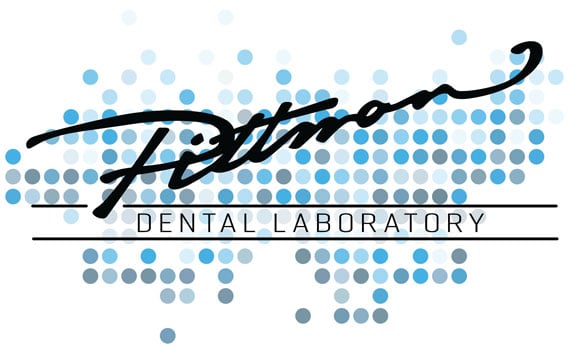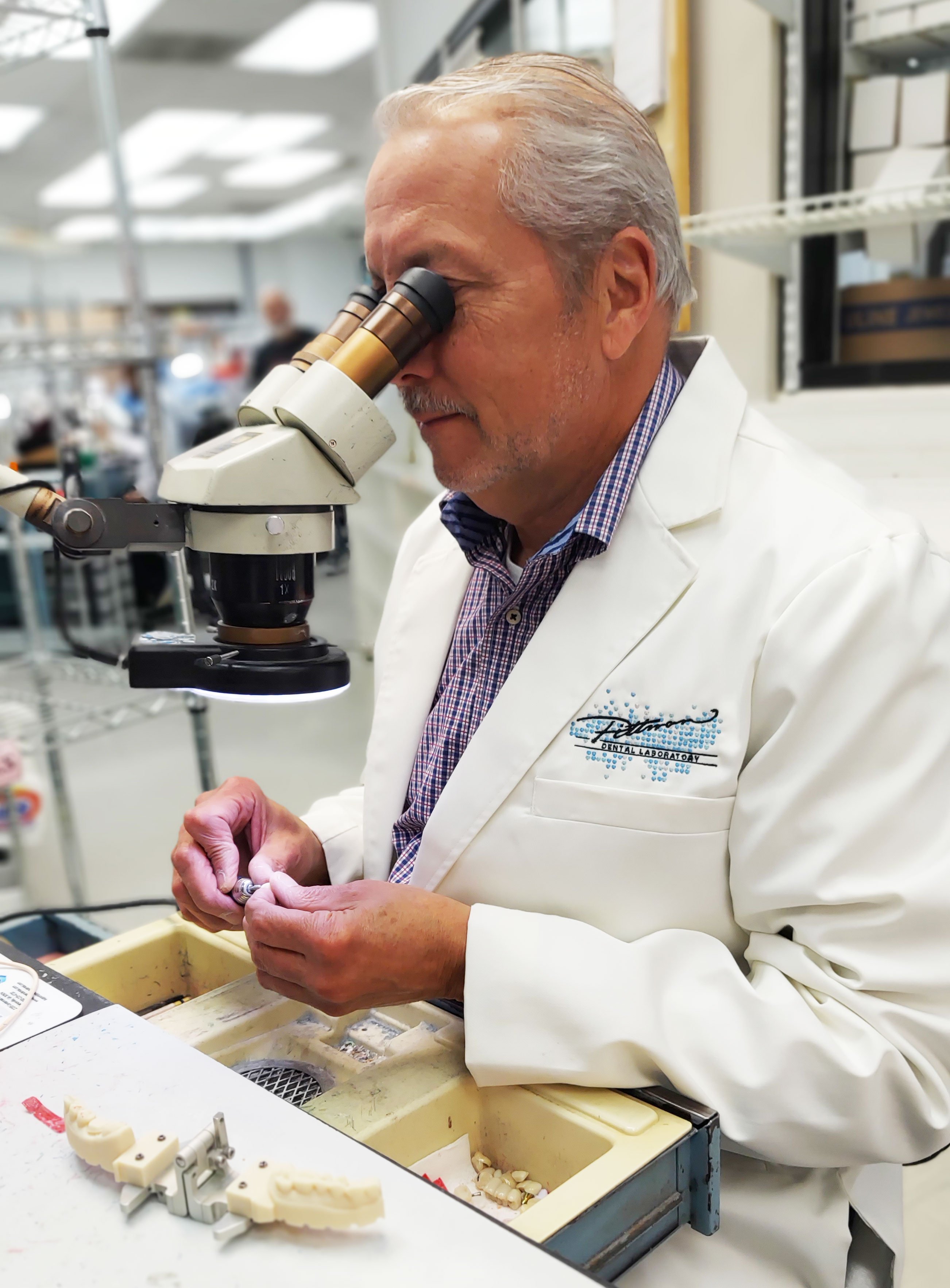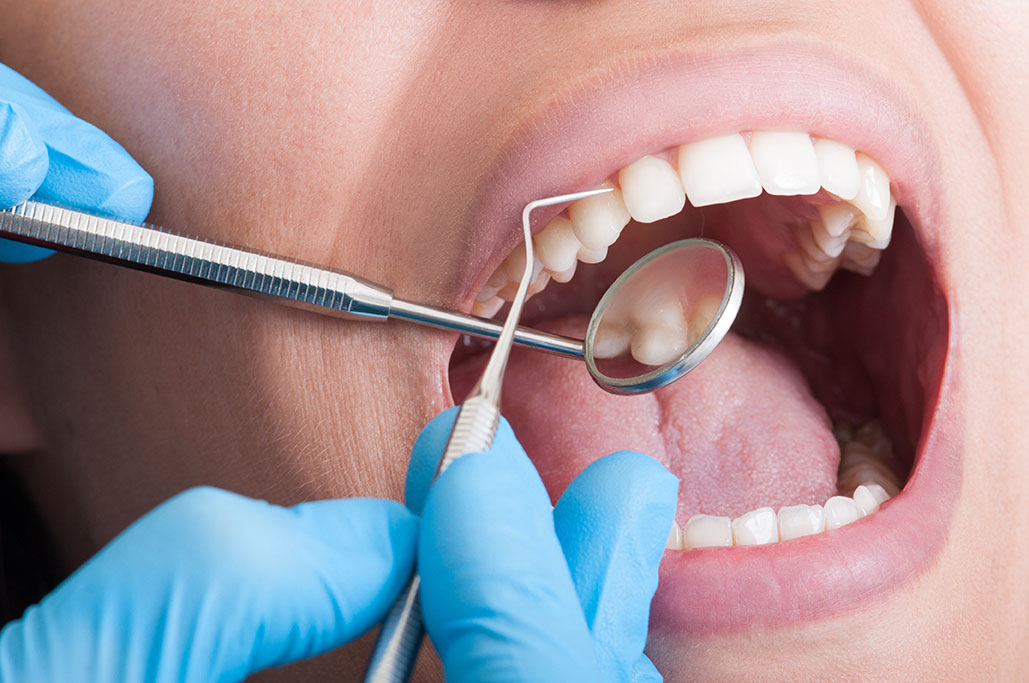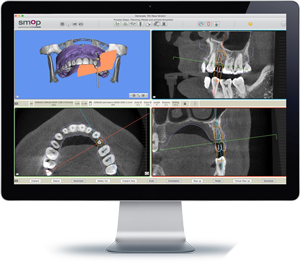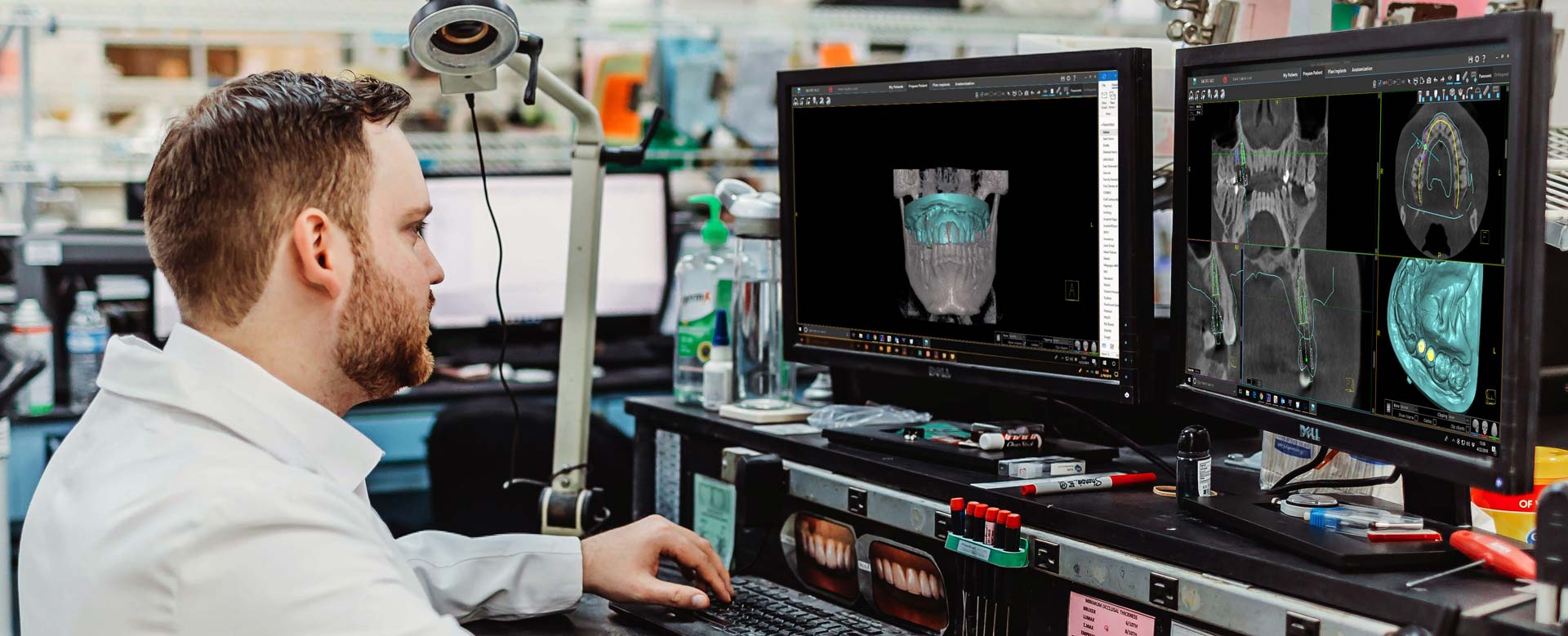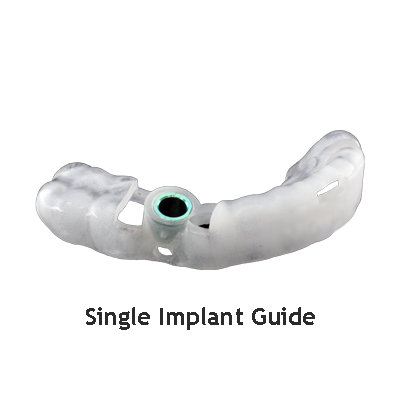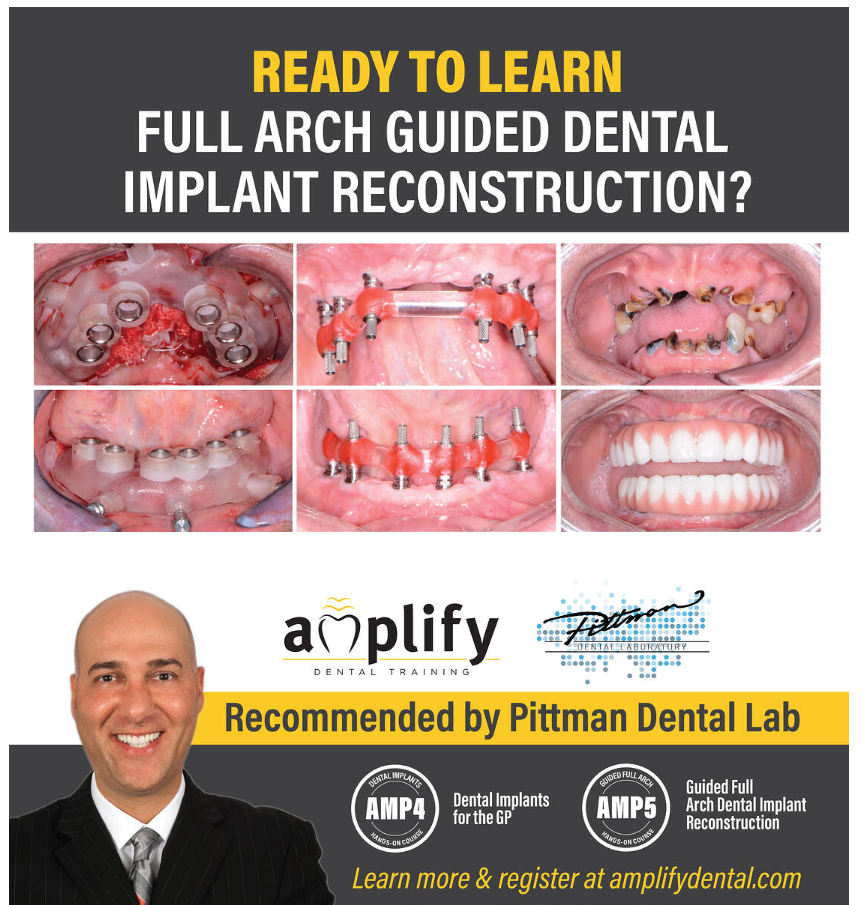As we step into the promising realm of 2024, the field of dentistry is evolving at an unprecedented pace, driven by technological advancements and a growing focus on patient-centric care. Let's delve into the top trends shaping the future of dental practices.
1. Tele-Dentistry Revolution:
Tele-dentistry is no longer a futuristic concept; it's the present and the future. With the integration of advanced communication technologies, patients can now consult with their dentists remotely. From virtual check-ups to video consultations, tele-dentistry enhances accessibility and convenience, fostering a more patient-friendly approach to dental care.
2. Artificial Intelligence in Diagnosis:
AI is making waves in dentistry by revolutionizing diagnostic processes. Machine learning algorithms analyze radiographs and other imaging data, aiding in the early detection of dental issues. This not only improves diagnostic accuracy but also allows for more personalized treatment plans, ultimately leading to better patient outcomes.
3. 3D Printing for Dental Prosthetics:
The era of traditional dental prosthetics is gradually giving way to 3D printing technology. From crowns and bridges to dentures, 3D printing enables the creation of precise, customized dental prosthetics. This not only reduces production time but also enhances the fit and comfort for patients, marking a significant leap in the world of dental restoration.
4. Regenerative Dentistry Breakthroughs:
Advancements in regenerative dentistry are opening new avenues for treating dental problems. Stem cell research and tissue engineering are at the forefront, paving the way for regenerating damaged tissues, such as gums and teeth. This has the potential to transform how we approach dental treatments, moving towards more natural and sustainable solutions.
5. Virtual Reality in Patient Education:
Patient education is taking a leap into virtual reality (VR). Dentists are leveraging VR technology to create immersive experiences that educate patients about procedures, treatments, and overall oral health. This interactive approach enhances patient understanding and engagement, demystifying dental care and reducing anxiety associated with visits to the dentist.
In conclusion, 2024 is a landmark year for dentistry, characterized by innovation and a commitment to enhancing patient experiences. Pittman Dental Laboratory and Surgical Solutions is embracing these innovations and investing in the technology skilled technicians that will enhance our products and services. As these trends continue to shape the landscape of dental practices, both professionals and patients alike can look forward to a future where technology and compassion converge to redefine oral healthcare.
Pittman Dental Laboratory Blog
Embracing the Future: Top Trends in Dentistry for 2024
Topics: Dental Technology, Dental Industry, dental training
The Crucial Role of an Account Manager in Dental Laboratories
In the dynamic world of dentistry, seamless communication between dental practitioners and dental laboratories is essential for delivering optimal patient care. The linchpin in this collaborative relationship is the account manager, a dedicated professional who serves as a bridge between the dental practice and the laboratory. At Pittman Dental Laboratory, we understand this, so let's delve into five crucial steps that underscore the importance of having an account manager for dental practitioners when submitting cases to a dental laboratory.
1. Streamlined Communication:
A Pittman account manager acts as a central point of contact, ensuring clear and efficient communication between the dental practitioner and the dental laboratory. By having a designated liaison, practitioners can easily convey their specific requirements, discuss case details, and address any concerns. This streamlined communication eliminates potential misunderstandings, reducing the likelihood of errors and enhancing overall efficiency.
2. Tailored Consultation:
With a Pittman account manager in place, dental practitioners gain access to personalized consultation services. These professionals possess in-depth knowledge of dental materials, technologies, and processes. They can provide valuable insights, helping practitioners make informed decisions about material selection, case planning, and treatment options. This tailored guidance contributes to the overall success of dental cases.
3. Expedited Case Management:
Time is of the essence in dentistry, and a Pittman account manager plays a pivotal role in expediting case management. By overseeing the entire process from case submission to delivery, they ensure that cases progress smoothly through each stage. This proactive approach minimizes delays, allowing practitioners to focus on patient care without being burdened by logistical challenges.
4. Quality Assurance:
Pittman account managers serve as quality assurance advocates, ensuring that each dental case meets the highest standards. They collaborate closely with the dental laboratory team to monitor the progress of cases, conduct quality checks, and address any issues that may arise. This commitment to quality enhances the reliability of the laboratory's services and fosters a sense of trust between practitioners and the laboratory.
Topics: Remake Percentage, New Dental Practice, Dental Industry, lab account manager
Revolutionizing Full-Arch Prostheses: The Role of Photogrammetry in Implant Placement Data Capture
In the realm of dental prosthetics, the quest for precision and efficiency has driven the adoption of innovative technologies. Among them, photogrammetry stands out as a game-changer in capturing crucial data for implant placement in full-arch prostheses. This cutting-edge technique harnesses the power of photography to create detailed, three-dimensional models, significantly enhancing the accuracy and success of implant procedures.
Traditionally, implant placement for full-arch prostheses relied heavily on manual measurements, impressions, and radiographic imaging. While these methods have served their purpose, they often left room for human error and lacked the comprehensive detail required for optimal results. Enter photogrammetry, a non-invasive process that captures high-resolution images from multiple angles, creating a digital representation of the patient's oral environment.
One of the primary advantages of photogrammetry is its ability to provide a 360-degree view of the patient's oral structures. By strategically placing cameras around the patient's head, clinicians can capture a series of images that are then processed using specialized software. The result is a detailed, three-dimensional model that offers an unprecedented level of accuracy in assessing the patient's anatomy, bone density, and overall oral health.
When it comes to implant placement, this level of precision is paramount. Photogrammetry allows clinicians to analyze the available bone structure with unparalleled detail, ensuring that implants are positioned optimally for stability and long-term success. Additionally, the technique aids in identifying potential challenges, such as anatomical variations or sinus proximity, allowing for careful preoperative planning and mitigating the risk of complications.
The benefits of photogrammetry extend beyond the surgical phase. The three-dimensional models generated through this process serve as invaluable tools for designing and fabricating prostheses with an unparalleled level of accuracy. This not only enhances the fit and function of the prosthetic but also streamlines the overall treatment process, reducing chair time for patients and increasing efficiency in the dental practice.
Photogrammetry is revolutionizing the landscape of full-arch prosthesis procedures by providing clinicians with a powerful tool for capturing precise implant placement data. Pittman Dental Laboratory and Surgical Solutions invests in photogrammetry with technology such as the dental device from InstaRisa face scanner. As technology continues to advance, the integration of photogrammetry into dental practices is set to become a standard, Pittman uses this technology for better outcomes and patients seeking optimal oral rehabilitation through full-arch prostheses.
Topics: Dental Implants, Capture, All on X, photogrammetry
Unveiling the Marvels of Anatomical Healing Abutments: A Scan Above the Rest in Implant Surgery
As the field of dentistry continues to evolve, technological advancements play a pivotal role in enhancing patient outcomes and streamlining procedures. Among the breakthrough innovations, ScanCode, the anatomical healing abutment emerges as a game-changer in implant surgery, offering a unique blend of benefits that transcend traditional approaches. What sets it apart is not just its anatomical design but also its scannable nature, paving the way for a more efficient and precise implantation process.
At the core of ScanCode's advantage is the anatomical healing abutment's ability to mimic the natural contours of the patient's oral anatomy. Unlike conventional healing abutments, which often feature a generic design, these anatomically shaped counterparts provide a customized fit, promoting optimal soft tissue healing and esthetic integration. This tailored approach contributes to reduced patient discomfort and faster recovery times, ultimately enhancing the overall patient experience.
Furthermore, the scannable nature of ScanCode elevates the precision of implant surgery to unprecedented levels. Integrating seamlessly with advanced scanning technologies, such as intraoral scanners and cone-beam computed tomography (CBCT), ScanCode enable detailed and accurate digital impressions of the implant site. This not only simplifies the treatment planning process but also ensures a perfect match between the implant and the final restoration, minimizing the margin for error.
The benefits extend beyond the chairside experience. The scannable feature of ScanCode facilitates efficient communication between dental professionals and Pittman. Digital impressions captured through the anatomical healing abutment can be easily shared, enhancing collaboration and expediting the production of prosthetic components. This not only saves time but also reduces the need for physical impressions, contributing to a more eco-friendly and patient-friendly practice.
In conclusion, ScanCode, with its dual advantages of anatomical precision and scannability, marks a significant leap forward in the realm of implant surgery. By prioritizing patient comfort, accelerating recovery times, and streamlining the digital workflow for dental professionals, ScanCode is poised to redefine the standards of care in implant dentistry. ScanCode stands as a testament to the relentless pursuit of excellence in dental innovation that Pittman Dental Laboratory strives for on a daily basis. Learn more about ScanCode and order your ScanCode kit today.
Topics: intraoral scanner, Dental Implants, Oral Surgeon, Dental Technology, ScanCode
Title: Promising Experimental Medicine May Revolutionize Dentistry
Topics: Dental Implants, Focal Point, Guided surgery, Capture, All on X, Dental Technology
The difference between file types in Digital Dentistry
In the world of digital dentistry, the use of advanced technology has revolutionized the way dental professionals diagnose, plan treatments, and create custom dental appliances. Digital files play a crucial role in this transformation, and four common file formats are frequently used: STL, CBCT, PLY, and OBJ. Each of these formats serves specific purposes and has distinct characteristics that make them essential tools in the field. Let's explore the differences between these file types.
Topics: intraoral scanner, tech, Dental Technology
The Dental Model-less Workflow: Revolutionizing Dentistry for Labs and Practices
In recent years, the world of dentistry has witnessed a groundbreaking shift in technology usage. The adoption of the dental model-less workflow has been a game-changer for both dental laboratories and practices. This digital revolution has been particularly welcome news by Pittman Dental Laboratory, looking to reap the benefits of a completely digital workflow. The model-less approach involves the elimination of physical dental models, relying solely on digital tools for treatment planning and fabrication.
Between 2017 and 2021, the percentage of practices embracing this model-less concept more than doubled from 22% to 53%. Pittman Dental Laboratory is one of the leading labs in the country accepting digital cases. This shift has enabled them to streamline their processes and enjoy a multitude of benefits. Let's delve into the advantages of the dental model-less workflow for both Pittman and their practices.
1. Streamlined Workflow: Gone are the days of messy impressions and physical models. The digital workflow simplifies the process, allowing dental professionals to scan the patient's oral cavity, creating a 3D model that can be manipulated and analyzed with ease. This not only reduces the risk of errors but also accelerates the workflow.
2. Cost-Efficiency: Embracing model-less dentistry translates to significant cost savings. Practices no longer need to invest in materials for traditional models, which can be expensive. Moreover, it reduces labor costs associated with model creation, manipulation, and storage.
3. Faster Turnaround Times: The elimination of physical models and the manual steps involved in traditional dentistry significantly reduces production and turnaround times. Patients benefit from faster treatment planning and quicker delivery of restorations.
4. Improved Accuracy: Digital scans and models are incredibly precise, minimizing the chances of errors in treatment planning and restoration fabrication. Dentists can provide more accurate diagnoses, leading to better treatment outcomes.
5. Enhanced Patient Experience: Patients no longer need to endure the discomfort of messy impressions. The digital process is more comfortable and less time-consuming, leading to improved patient satisfaction.
6. Eco-Friendly: Going model-less is not only efficient but also environmentally friendly. It reduces the need for physical models, which are often discarded after use. This contributes to a greener, more sustainable approach to dentistry.
The Pittman model-less workflow offers a host of benefits to practices, ushering in a new era of efficiency, accuracy, and cost-effectiveness. As the technology continues to advance, we can expect an even more seamless integration of digital tools into the dental field.
This shift is a testament to the ever-evolving landscape of dentistry, with technology at its forefront. Pittman Dental Laboratory consistently invests in cutting-edge technologies each year, resulting in accelerated and superior results for our esteemed dentists and their patients. The future of dentistry looks brighter than ever, promising improved patient care, reduced costs, and a more sustainable approach to oral healthcare. As more practices embrace the model-less concept, we can expect the dental industry to continue to flourish in the digital age.
Topics: oral scanners, Remake Percentage, Dental Technology, model-less
Pittman Surgical Solution Guides: Guiding You to Dental Excellence
When it comes to dental surgery, precision is paramount. Whether you're a dentist looking to provide your patients with the best care possible with less chair time or a patient seeking a seamless dental experience, Pittman Surgical Solutions has you covered. We provide many options for dentists to choose from with our innovative dental surgical guides.
What Are Dental Surgical Guides?
Dental surgical guides are essential tools that enhance the accuracy and predictability of dental procedures, including dental implant placements, extractions, and various other oral surgeries. These guides are custom-designed for each patient, ensuring that the treatment plan aligns perfectly with their unique dental anatomy.
Topics: Dental Implants, Oral Surgeon, Focal Point, Guided surgery, Capture, All on X, CAD/CAM
Unlocking Better Sleep: How Dental Appliances Can Help Manage Sleep Apnea
Sleep apnea is a prevalent sleep disorder affecting millions of people worldwide, and its consequences can be severe, from chronic fatigue to cardiovascular problems. While Continuous Positive Airway Pressure (CPAP) machines have been the go-to solution for years, not everyone finds them comfortable or effective. This is where dental appliances come into play, offering a lifeline to both patients and dentists looking to expand their services and generate more income.
Understanding Sleep Apnea:
Before diving into dental appliances, let's briefly understand sleep apnea. It is characterized by interrupted breathing during sleep due to blocked airways. There are two primary types: obstructive sleep apnea (OSA) and central sleep apnea. OSA, the most common type, occurs when throat muscles relax excessively, causing airway obstruction.
The Role of Dental Appliances:
Dental appliances, also known as mandibular advancement devices (MADs) or mandibular repositioning devices (MRDs), have gained recognition as a comfortable and effective alternative for treating mild to moderate OSA. These devices work by repositioning the lower jaw and tongue, which helps to keep the airway open during sleep.
Why Dentists Should Offer Dental Appliances:
1. Diversify Services: By incorporating dental appliances into their practice, dentists can diversify their services, attracting a broader range of patients. This expanded offering can be a valuable source of additional income.
2. Patient-Centered Approach: Many patients with sleep apnea are hesitant to use CPAP machines due to their bulkiness and noise. Dental appliances offer a more patient-friendly solution, increasing compliance and patient satisfaction.
3. Collaboration Opportunities: Dentists can collaborate with sleep specialists and physicians to create a holistic approach to treating sleep apnea. This collaboration can enhance patient care and referrals.
4. Long-Term Patient Relationships: Offering sleep apnea treatment through dental appliances fosters long-term relationships with patients who may require ongoing care, including appliance adjustments and replacements.
Steps for Dentists to Get Started:
1. Training: Dentists should seek training and certification in dental sleep medicine to ensure they can provide the best care to their patients.
2. Patient Screening: Implement a screening process to identify potential sleep apnea patients during regular dental check-ups.
3. Customized Appliances: Work closely with patients to design and create customized dental appliances tailored to their specific needs.
4. Collaboration: Establish relationships with sleep specialists and physicians to build a network for referrals and comprehensive care.
In conclusion, dental appliances are a valuable addition to any dental practice. They provide an effective, patient-centered solution for sleep apnea while also offering dentists the opportunity to expand their services and generate additional income. Pittman Dental Laboratory offers several sleep apnea appliances for your patients:
Topics: Dentist, Dental Lab, new patients, aquiring new patients, night guards, New Dental Practice
Elevate Your Dental Practice with Amplify Dental Training
In the dynamic field of dentistry, staying at the forefront of knowledge and skill is crucial for providing the best care to your patients. Dentists looking to expand their expertise and practice offerings need not look further than Amplify Dental Training. This educational institution has steadily grown over the years, offering a wide range of courses that empower dentists with the skills needed to excel in their careers.
Led by the esteemed Dr. Ara Nazarian, a practicing general dentist with a wealth of experience, Amplify Dental Training distinguishes itself by offering courses that are not only informative but also presented in a friendly, practical, and easy-to-understand manner. Dr. Nazarian's teaching style is rooted in real-world clinical cases, documented extensively through photography and video, making the learning experience immersive and engaging.
One of the hallmarks of Amplify Dental Training is its commitment to hands-on learning. Over the years, the institution has trained thousands of dentists who have collectively treated thousands of patients. Attendees have extracted more than 20,000 teeth and completed grafting procedures on over 5,000 sites, all performed on actual patients provided by the training program. This invaluable hands-on experience ensures that dentists leave the program with a high level of clinical competence.
Amplify Dental Training's dedication to its students extends well beyond the duration of the courses. The institution strives to build lasting relationships with its attendees, making assistance and support available for years after they complete their programs. This ongoing support ensures that dentists continue to grow and evolve in their practices throughout their careers.
One of the unique features that set Amplify Dental Training apart is its comprehensive live-patient extraction and grafting programs. Unlike many other programs, here, students actually get to work on live patients provided by the institution. The opportunity to perform procedures on real patients under expert guidance is unparalleled and greatly enhances the learning experience.
When considering dental training programs, it's essential to evaluate the opportunities for hands-on experience and the level of patient interaction. Amplify Dental Training stands out as a leader in live-patient learning, and they encourage potential students to compare their offerings with other programs in the U.S. Ask about the number of procedures you'll perform, the availability of patients, and the level of practical experience you'll gain – and you'll find that Amplify Dental Training offers a truly exceptional educational experience.
Amplify Dental Training and Dr. Ara Nazarian are privileged to have the support and sponsorship of Pittman Dental Laboratory and Surgical Solutions. As a testament to their commitment, Pittman offers exclusive discounts and pricing for students enrolled in the training program. This partnership further enhances the value and accessibility of the educational experience provided by Amplify Dental Training. If you're a dentist looking to elevate your skills and expand your practice offerings, Amplify Dental Training should be at the top of your list. With its exceptional faculty, comprehensive programs, commitment to hands-on learning, and ongoing support, it's the ideal destination for dentists who aspire to reach new heights in their careers. For more information contact kim@pittmandental.com or go to https://www.amplifydental.com/
Topics: aquiring new patients, Guided surgery, Capture, dental training
